What is a Unicorn?
A unicorn is a legendary creature that is known to possess magical abilities. Though in modern day this creature is thought to be nothing more than a myth, ancient cultures wrote of it as a real animal. In fact, it was included in many natural history books of the time.
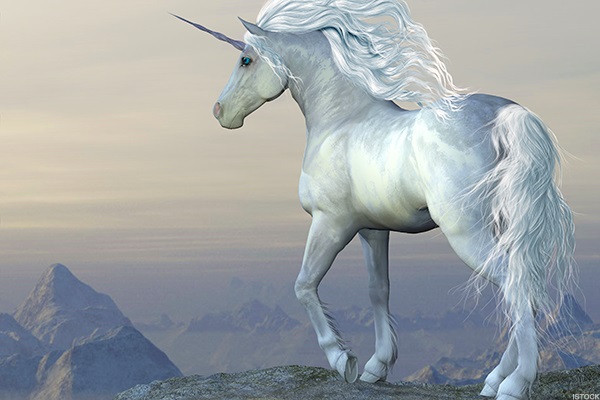
The most popular depictions of the unicorn are known by Greek and European accounts and mythology, though there are similar unicorn-like creatures that have been recorded throughout the world. There were many interpretations of the beast – some saw it as the incarnation of purity and grace. Some believed that the horn of the beast had the power to provide cures for sickness and the ability to serve as an antidote for poison.
Because of its supposed magical abilities, the unicorn and its horn was greatly sought after by anyone with means in the early ages. It was common for those of great wealth or nobility to attempt to procure a horn to protect themselves against attacks or to extend their lifespan in general. In fact, many ‘horns’ were sold by traders who came from the north and south. While these were not unicorn horns (they were either rhinoceros horns or narwhal horns), they sold for many times their weight and gold and proved to be a very profitable industry.
Asian Unicorn
In Chinese mythology, there are many accounts of a creature that is known as the qilin. This creature is often thought to be the Chinese equivalent of a unicorn, though it also has the properties of a chimera.

The qilin is known to have the body of a deer, a lion head, green scales, and one long horn that was its defining characteristic. There is also a Japanese beast of similar makeup that is called the kirin, but it is known that this creature is based off of the qilin.
The qilin are peaceful creatures and are known to be very magical and powerful. The qilin are thought to be able to walk upon grass without disturbing a single blade. However, since these creatures did not want to harm the ground, they were often thought to walk on clouds or water instead. They were also thought to be good judges of character. Many ancient stories show these creatures as being able to know if a person was good or evil just by looking at them. They are peaceful in nature and only punish the wicked.
Also similar to unicorn mythology, qilin are often seen as a symbol of fertility. Although they were not hunted for their horns, they were often shown in art work as bringing infants to families.
African Unicorn
In Kongo oral traditions, there is a creature called the Ababda that is very similar to a unicorn. This creature is known to be about the size of a donkey and is said to have the tail of a boar. While it is known to have two horns instead of one like a unicorn, the horn of the Ababda is known to serve as a cure for many illnesses. Perhaps most importantly, however, the Ababda horn is known to be an antidote to many poisons.
South American Unicorn
The legend of the unicorn can be found in South America as well – specifically the country of Chile. This creature is called the camahueto and is known to possess many of the qualities of the unicorn.
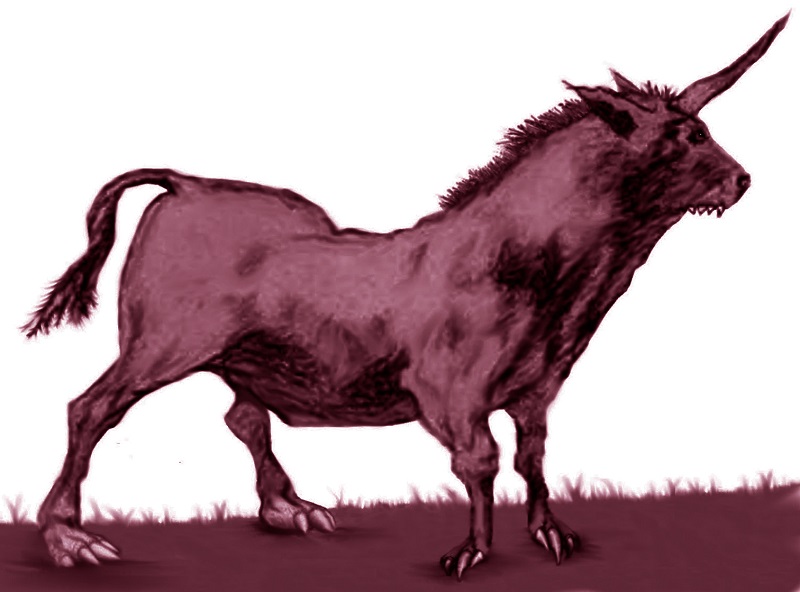
The camahueto is a creature that is very similar to a calf or bull. However, instead of having two horns, it only has one. The camahueto is known to be hunted by the machis (medicine woman) because their horn is known to possess the cures to illnesses. The machis are known to stalk the camahueto until she is able to capture it with a lasso and tear out its horn. After she has caught it, she bandages the opening and lets the beast continue on its way.
One of the most common uses for the camahueto horn is to scrape off shavings from the horn and mix them with sea water and apple cider. This combination was thought to cure impotency and restore vitality in older men.
It was also believed that the machis would plant small pieces of the horn back into the ground to allow other camahuetos to grow.
Greek / European Unicorn
The unicorn captured the minds and hearts of many in the European culture, especially because of the unique properties it supposedly possessed and the connection that was later made to Christianity. The unicorn was often portrayed as a magical white horse or goat-like creature with a long horn that rose from the center of its head. It was often thought to be a woodland creature that was difficult to capture and full of grace and majesty.
The unicorn was also thought to have cloven hooves and was known to possess powers that were invaluable for the time period. Among other things, the unicorn was thought to hold the cure to many sicknesses, the ability to purify water, and the antidote to poisons in its horn. Because it was so innocent and full of purity, it was commonly believed that only a virgin would be able to capture the creature.
It was also commonly sought after by nobility and royalty. There were many who were known to pay an impressive sum of money for the opportunity to possess the fabled horn. Though no real unicorn horns have been found to date, unicorns were thought to be a living creature that was easily found in early cultures. There was no speculation as to whether the creatures might be fictional – they were often included in natural history textbooks.
History of the Unicorn
The first mention of the unicorn comes from the Greek writer Ctesias. They are mentioned in his work entitled ‘Indika’ (meaning ‘On India’). He describes the unicorns as being a breed of wild ass that was incredibly fast and light on its feet. Its defining feature, of course, was a horn that was about 28 inches in length that grew from the center of its head. Unlike the later tales of unicorns, however, these horns could be white, red, or black instead of the white color that is characteristic of the modern day understanding of unicorns.
Ctesias supposedly got his information from his time in Persia. Aristotle also gives a similar description of two such beasts that come from the same region – the oryx and the ‘Indian ass’. It is thought that there were many others who drew their descriptions of unicorns from this area as well. In fact, carvings of unicorns have been found on a sculpture at the ancient capital of Perspolis.
There is also an account on the power of unicorns that was found by Cosmas Indicopleustes – a merchant from Alexandria that shed many insights on early India. While visiting the King of Ethiopia he saw four brass statues that portrayed the unicorn and wrote an account of what he had learned. He claimed that all the strength of the creature could be found in the horn. He also noted the tremendous ability of the creature and it’s tendency to throw itself from a high cliff rather than to be captured. It was supposedly able to absorb all the impact with its horn and escape safely.
The Image of the Unicorn Evolves in the Middle Ages
During the Medieval Ages, the image of the unicorn grew into the fantastic image that we now recognize the creature by today. This is partially due to the adaptation of the story by the Christian Church. The claiming of the creature by the Church allowed many artists to portray it in a wide variety of artwork. Because there was a great emphasis on religion during this time period, this enabled artists to work with mythology without being prosecuted by the church.
The unicorn was also seen in a new light in mythology. The beast was still seen as largely unconquerable – but with a few exceptions.
The Portrayal of the Unicorn
The unicorn was known to be a mighty beast that was a creature of the woodlands and largely unconquerable by man. However, there was one important exception to this rule – the unicorn could not resist its urge to be drawn to a virgin maiden. When hunters would go out in search of a unicorn, it was often thought that the prideful creature would pause every now and then instead of simply escaping to taunt the hunters.
To take advantage of this weakness, lore states that a virgin maiden was sometimes told to wait underneath a tree and wait for the unicorn to gallop by. When the unicorn saw the maiden, it would inevitably be drawn in and lay its weary head in her lap. When it fell asleep, the hunters would gather round and trap the creature.
The Unicorn and Romance
There were also connections that were drawn between the tale of the unicorn and the romance between men and women in the courting process. Many 13th century French authors liked to make the analogy that just as a unicorn is attracted to the virgin so is a lover attracted to his woman. There were also similar comparisons that sought to speak of the unicorn as a symbol of chaste love and faithful marriage.
Marco Polo’s Description of the Unicorn
Although there are many different interpretations of the unicorns throughout the Medieval Ages, many of these descriptions echoed the magical awe of the beast. Marco Polo’s account, however, leaves much to be questioned.
He describes the creatures as being close in size to elephants and hair similar to that of a buffalo. They had a black horn in the middle of their heads that could only be described as being similar to a boar. He also noted that they enjoyed basking in mud and slime – a far cry from the pure nature that was characteristic of the beast at the time.
He was shocked to note that the beasts were noticeably different from the enchanting creatures that could be captured by virgins. His obvious description of a rhinoceros in his writings leads many to wonder if he was mistaken in his identification of the creature or if he was alluding that the beast was an over exaggeration of the rhinoceros.
The Unicorn Interpreted By the Christian Church
The unicorn was enthusiastically adopted by the Christian Church who appreciated the many allegories that could be used to symbolize the creature’s connection to Christ. The two most popular expressions of this idea were used to describe the incarnation of Christ and the Passion of the Christ.
The Virgin Mary and the Incarnation of Christ
One of the most popular ways in which the legend of the unicorn was used to relate to Christianity was with the Incarnation of Christ. This version compares the unicorn approaching the virgin as the process that was undergone to allow the Virgin Mary to become impregnated by Yahweh. It is thought that this reference could clearly be seen by the unicorn laying its head down on the virgin’s lap – in close proximity to the womb.
The Passion of the Christ
Another interpretation of Christianity’s connections to the unicorn come in the form of the passion of the Christ. The hunters represent the sinners who sought to overcome Christ. The unicorn (Christ) was able to outrun the hunters easily because he was the embodiment of all that is pure and good. However, because of his great desire to save those who are pure of heart (the virgin) the unicorn goes to the virgin maiden and lays his head in her lap, selflessly sacrificing himself.
This interpretation can possibly be seen in the seven panel tapestry piece entitled, ‘The Hunt of the Unicorn.’ This series depicts a unicorn that is pursued by many noblemen. They are unable to capture the creature until it goes to rest in the lap of a virgin. They appear to kill the creature, but the last panel shows a resurrected unicorn that lives happily in field of flowers.
The Value of the Unicorn in Early Cultures
The unicorn was highly sought after in many cultures – especially European cultures that hoped to gain some of the mythical powers of the beast. Many accounts from early times claim that the secret to the unicorn’s power is hidden in its horn. The horn itself is thought to be made of a substance called Alicorn that was thought to hold the ability to heal various ailments and diseases. In addition to this, it was also thought to cure impotency and give the owner the ability to purify water and protect against poisons.

The horn was greatly desired by many royals and nobles. In fact, it was common practice for nobility to use alicorn to create ceremonial cups that were used by high ranking members of society. The protective abilities of the horn would prevent one from dying even if their cup had been spiked with poison.
The horns were also desired as decorative fixtures as well. The Throne Chair of Denmark was thought to have been made of unicorn horns for many years. In reality, these horns are likely narwhal horns that were sold by traders from the north. The Europeans were not aware of the narwhal and its unique horn – as a result, it was very easy for northern traders to scam the Europeans with fake horns that were sold for much more than their weight in gold.
Possible Explanations for the Myth
So what inspired the story of the unicorn? It’s likely that the mythical beast is no more than a misunderstanding of the natural wildlife of ancient worlds. It is extremely likely that the beast was created by European merchants and travelers who studied the drawings, statues, and paintings of the cultures they visited on their trading routes.
While it is possible that there was, indeed, a horse-like or goat-like creature called the unicorn it is doubtful the creature existed into modern day. It was likely wiped out by hunters who hoped to use its horn to make an impressive profit.
The Rhinoceros
One of the most logical answers to the question of the existence of unicorns comes from the rhinoceros. Many people point to the creature not only because of its characteristic single horn, but also because of the account of Marco Polo. In his writings, Marco Polo claims to have encountered a unicorn during his travels. However, the brutish account of the beast and the single black horn that protruded from its head was more characteristic of a rhinoceros than a magical unicorn.
This leads many to believe that the original unicorns were rhinoceros’ that were over exaggerated by travelers and merchants looking to make a profit from their stories.
The Aurochs
There are also those who believe that the aurochs of Europe could have been the inspiration for the tale. The aurochs are an extinct species of cattle that are known to have been very large. As an ancestor to domestic cattle, it is thought that creature could have inspired many stories because of its great power and strength.
When drawn from the side (as many creatures were in early cultures) it may have appeared that the aurochs was a single horned creature. As many years passed by, it would have been possible for the early cultures to think that the images referenced a strange and mythical creature. Additionally, the established sightings in history could have explained why this unknown creature was recorded in natural history instead of mythology.
The Narwhal
One of the biggest perpetrators of the myth was likely the northern hunters and traders that decided to pass off narwhal horns as unicorn horns. These hunters knew that the European population had never seen a narwhal and wouldn’t be able to tell the difference.
In fact, there was often speculation as to what a unicorn horn could look like until the narwhal horn was introduced into trade. Previously, a unicorn horn could be long or short and many different colors. When narwhal horns were introduced into trade however, they set the standard for what was considered to be a proper horn. They passed all the tests that were in place to check for fake horns because they were made of real horn. Additionally, their long length and spiraled texture was quickly adopted as the norm for what a unicorn horn should look like and was adopted into what is now the modern day understanding of unicorns.
Genetic Engineering
Still many wonder, is it possible that a unicorn did exist? And if so, could it be brought into existence again?
Those who look to Oberon Zell-Ravenheart would say yes. Zell – a self-proclaimed wizard – has been pursuing magic and the secrets of the past for many years. It was this obsession, along with appreciation for the book, ‘The Last Unicorn’, that inspired Zell to experiment with genetically manipulating goats so that they displayed only one horn.
Many who look at his successes are quick to call out the experiment as the phony replication of a unicorn. Others argue, however, that results are results and the creature is perhaps the best answer we have to how the unicorns of early cultures came into existence. Regardless of what the popular opinion is, many of Zell’s followers are certain that he is, indeed, a wizard and has brought the unicorn back into existence.


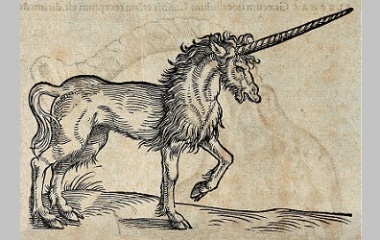
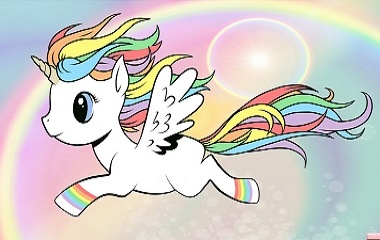
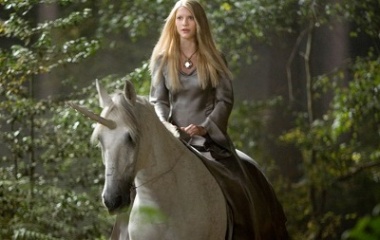


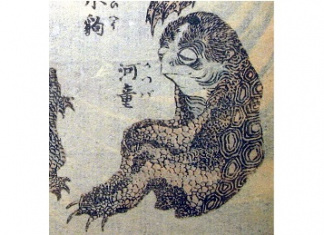



Thank you! This information was easy to understand and very helpful!!
I met a unicorn in my dreams and it explained things to me in a way I understood. The information available on the internet about unicorns is weirdly consistent with the unicorn I met. People know the nature of unicorns and what they represent. I think there is plenty of reason for us to think that unicorns are real but that they are largely hidden from the eyes of the majority which are not pure of heart.
I read the whole entire article and I absolutely love and although I am still young and my family and friends think I I’m wierd for this and it gets me down sometimes but I really think that they were and are still real.
I read the whole thing! Wow! This was REALLy intresting! Thank you for such fine infomation. ⭐
I like unicorns and i think they are real